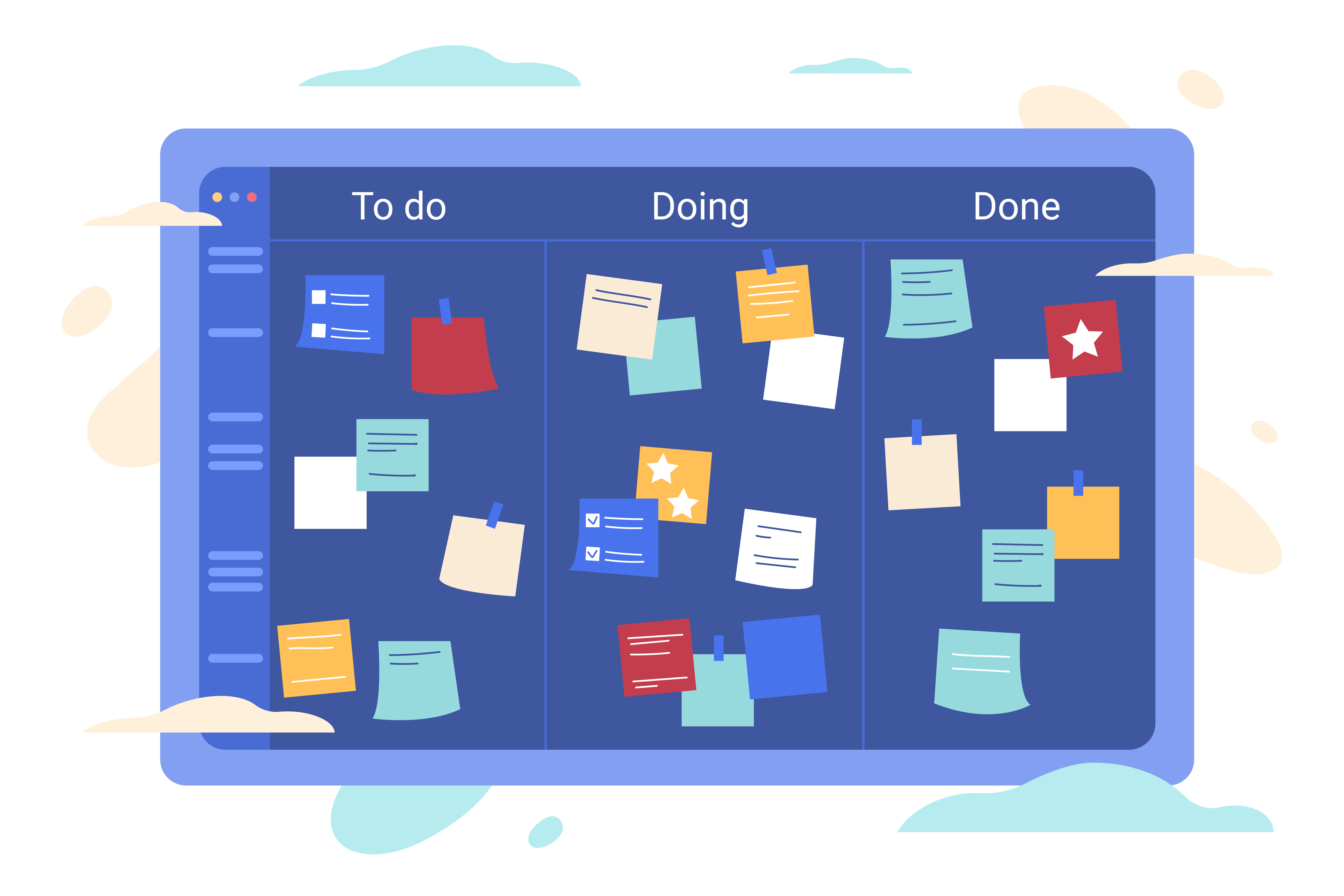The Kanban Method is a framework used for managing and improving work processes. It emphasizes visualization of work, limiting work in progress (WIP), and continuous improvement.

Principles of the Kanban Method
Visualize Workflow: Visualize the flow of work using a Kanban board, which typically consists of columns representing different stages of the workflow and cards representing tasks.
Limit Work in Progress (WIP): Limit the number of tasks that can be in progress at any given time to maintain focus, reduce multitasking, and improve flow.
Manage Flow: Manage the flow of work to ensure that tasks move smoothly from one stage to the next, identifying and resolving bottlenecks that hinder flow.
Make Process Policies Explicit: Define and make explicit the policies, rules, and guidelines that govern how work is done and how tasks move through the workflow.
Implement Feedback Loops: Implement feedback loops to gather data and insights about the process, enabling continuous improvement.
Improve Collaboratively, Evolve Experimentally: Encourage collaborative improvement efforts and continuously evolve the process through experimentation and incremental changes.
Practices of the Kanban Method:
Visualize the Workflow: Use a Kanban board to visualize tasks and their status, making it easier to track progress and identify bottlenecks.
Limit Work in Progress (WIP): Set WIP limits for each stage of the workflow to prevent overloading and improve flow.
Manage Flow:Monitor and manage the flow of work to ensure tasks move smoothly through the workflow.
Make Policies Explicit: Clearly define and communicate the policies and rules that govern the workflow, including how tasks are prioritized and assigned.
Implement Feedback Loops:Use feedback loops to gather data on the process and identify areas for improvement.
Improve Collaboratively, Evolve Experimentally: Encourage team members to collaborate on improving the process and experiment with new ideas to drive continuous improvement.
Benefits of the Kanban Method
Improved Efficiency: By visualizing work and limiting WIP, teams can improve efficiency and productivity.
Better Focus: Limiting WIP helps teams focus on completing tasks rather than starting new ones, reducing multitasking and improving focus.
Increased Flexibility: Kanban is flexible and can be applied to various types of work and industries.
Continuous Improvement: The Kanban Method encourages continuous improvement, with teams regularly reviewing and refining their processes.
Enhanced Collaboration: Kanban promotes collaboration among team members, with a shared focus on improving the workflow.
Overall, the Kanban Method is a powerful framework for managing work processes, promoting efficiency, collaboration, and continuous improvement.